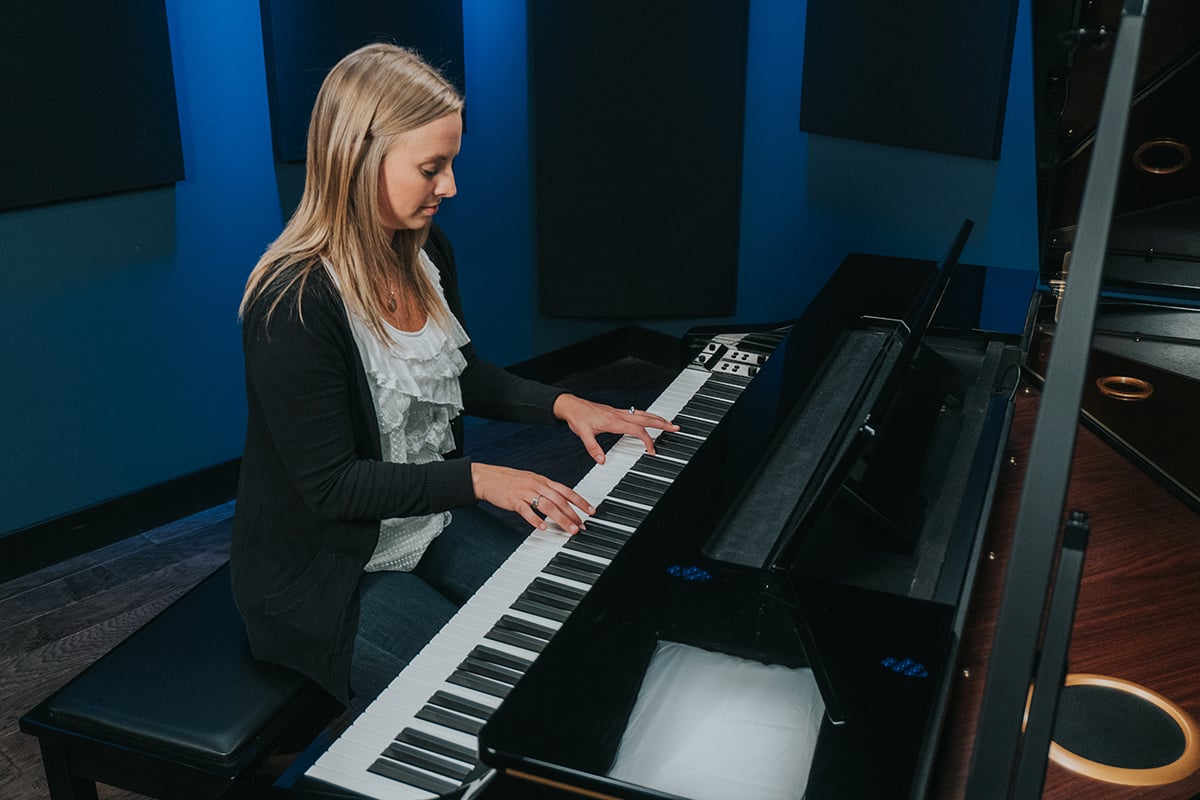Learning how to play the piano can be daunting. There are so many exercises to choose from when it comes to warm ups and building technical skills and not all of them are suitable for beginners.
So I have put together 4 exercises perfect for beginners (and intermediates) that will really help develop speed, dexterity, hand independence, and control. These skills are 4 pillars of any good pianist, so it’s really important to start working on these early.
These exercises are also a great way to ‘wake up’ the fingers and develop muscle memory.
Our first exercise is based on the five finger scale. This looks simple, but it can be quite challenging for beginners so don’t feel bad if it takes you a little while to get the hang of it. We are simply walking up five notes and back down. Start hands separately, and work towards playing both hands together.
The big thing to focus on here is control. Make sure you are applying even pressure. Once you are comfortable and in control, then you can work on building up speed gradually.
The next step with this exercise is to vary how we play each note. For example, in our left hand, we will play smoothly (legato) and in our right hand, we will play sharply (staccato). After we go up and down we can swap hands.
The final tip for this exercise is to switch up the rhythms. What I mean by this is that each hand will be playing different length notes. So our left hand will play quarter notes, while our right hand will play eighth notes. This means for every one note in our left, we’ll play two in our right. Again remember to switch hands.

Technique is the foundation to piano playing. If technique has been holding you back from playing the songs you love, check out Piano Technique Made Easy with Cassi Falk. This course, free with your Pianote membership, will take you through all 12 major and minor keys as you master scales, arpeggios, chords, and more.
This scale sounds fancy and intimidating, but it’s actually very simple! To play it, we put both of our thumbs on Middle C. We then play the C scale UP with our right hand and DOWN with our left. When we’ve done one octave, we come back to Middle C.
This scale is actually easier for a lot of people to play because the fingering is the same for both hands. We’ll be doing the thumb tuck and finger flyover at the same time.
Once that scale is comfortable, we’ll work on dynamics. Start softly, then increase the volume halfway before playing softer again at the end of the scale.
I like to call this exercise The Claw, and we use it in our Foundations Course at Pianote. To do this, you need to make a claw shape with the 1, 3 and 5 fingers and place it down on C.
This is a C chord. Some beginners find it difficult to make this shape and play the notes at the same time, so if that’s you, don’t worry. You can just take out the middle note and play the top and bottom notes.
From our C position, we are going to “claw” our way UP the scale. So we’ll play the same shape, but moving up one note each time. Because we are in C Major, we are playing all white notes. When we get to the top we’ll come back down.
This builds dexterity and muscle memory to play chords, which will be the foundation of nearly every song that you play. It also leads to our fourth and final exercise.
This exercise is very similar to the Solid Claw, except instead of playing all the notes together as chords, we are going to break them up and play them one at a time.
We’ll do the same thing as before, working our way up and down the keyboard. This is a great exercise for building speed and extremely fun to play fast, but make sure you are in control!
These lessons vary in difficulty and skill, so if there are some that are too challenging for you right now, don’t worry! Do what you can, and practice to get better. Then you can move on to the next one. A little bit of practice each day will make a huge difference in the long run.
Good luck!
Lisa Witt has been teaching piano for more than 20 years and in that time has helped hundreds of students learn to play the songs they love. Lisa received classical piano training through the Royal Conservatory of Music, but she has since embraced popular music and playing by ear in order to accompany herself and others. Learn more about Lisa.
/marketing/pianote/promos/april/banner-bg-m.webp)
We use cookies for traffic data and advertising. Cookie Policy »
/marketing/pianote/promos/april/banner-title.webp)